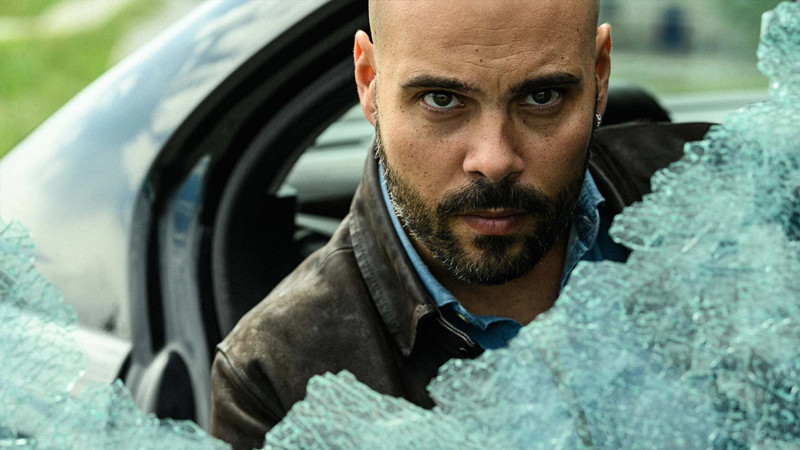
When people speak of Italian cinema, usually the great directors such as Fellini, Rossellini, Pasolini, and Antonini; or great films such as “Bicycle Thieves,” “The Leopard,” “Life is Beautiful” or “Cinema Paradiso” come to mind. These films and directors have entered into the worldwide vernacular of cinema along with the greatest every other country has given us. However, every country also has its own populist cinema that perhaps speaks more directly culturally, idiomatically, and ideologically to its people. This does not or should not discount how great these films can be – especially in the context of how we can glean so much from these types of aforementioned films.
In terms of popular Italian cinema, this usually steers towards comedies. Domestically produced comedies that are intended for the immediate Italian market generally dominate the box office, followed by drama and then crime. Generally speaking, Italian films that do well internationally are dramas and/or films that convey the romanticism of Italy. The following, therefore, is a list of great Italian films you have probably never seen or even heard of, by year of release.
1. Pane e cioccolata (Bread and Chocolate) (1973)
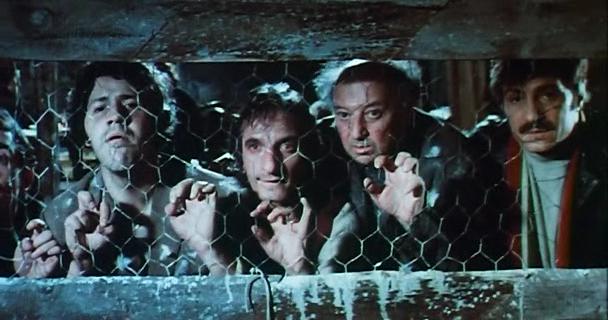
This film came during the tail end of the Commedia all’italiana period (semi-“tragic” dramatic comedies where the protagonist faces many mishaps). Nino Manfredi, who was also well known as a singer and all around Renaissance kind of guy, plays a role he became famous for: that of the lower-class southern Italian “loser” who has nothing but misfortune come his way. He plays Nino Garofalo, a southern Italian who finds work in a posh Swiss hotel, but is constantly facing obstacles.
First and foremost, he stumbles upon the body of a young girl when retrieving a ball with which he unsuccessfully tried to start a game of soccer. He walks right by the killer, bloody jump rope in hand on the other side of a tree. Nino almost walks right into highway traffic and the car that stops is, of course, full of police officers. He is immediately brought in for questioning. This is just the beginning of a series of mishaps he faces, the greatest being vying for a position against his nemesis, the dreaded Turk for his position at the hotel.
Finally he finds himself living in a chicken coop with Neapolitan chicken-pluckers and realizes that their optimistic singing is what he felt was wrong with delusional southern Italians to begin with – that they will always be looked down upon. He sees some Swiss youth skinny-dipping and decides to dye his hair blonde in an effort to fit in. It is in a bar when the Italian national soccer team scores a goal that he can not contain himself to hide his identity and he lets loose with a raucous cry of “goal!” After getting kicked out, he then ends up on a train full of migrant workers back to Italy. Again, their extreme optimism seems to gnaw away at him. The closing shot is him walking on the tracks. Maybe he is better off in Switzerland? The viewer is left to decide. The film was not released in the U.S. until 1978 but was an arthouse favorite and then a staple of HBO in the early ‘80s.
2. Profumo di donna (Scent of a Woman) (1974)
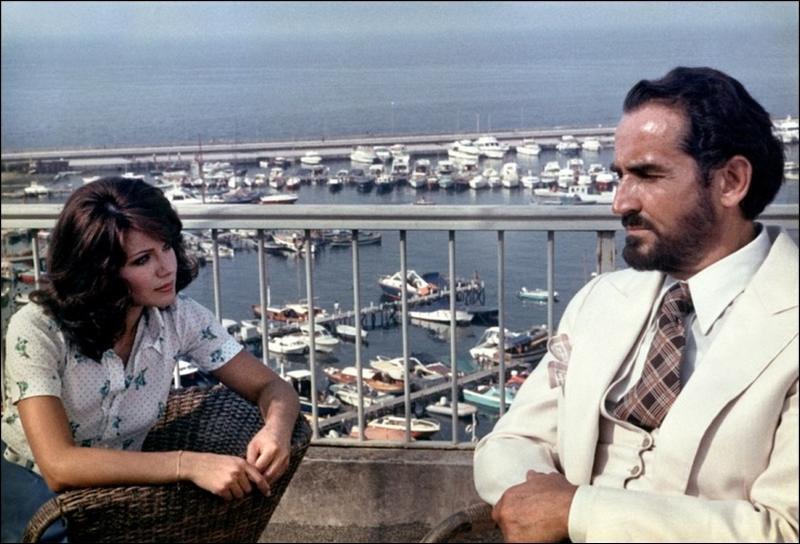
This was the original film that the Al Pacino version of 1992 was based on. The American remake was highly successful, unlike the remake of Giuseppe Tornatore’s “Stanno tutti bene,” which was remade into the fairly decent “Everybody’s Fine” with Robert De Niro in 2009 as a Chinese film of the same name again in 2016.
“Profumo” stars the well known Italian actor Vittorio Gassman and is also part of the Commedia all’italiana movement. It also differs markedly in some respects. Instead of planning to commit suicide solo, like Pacino’s character, Gassman’s character plans to commit suicide in a pact with a fellow officer blinded in the same incident. There is also no reunion with family as with Pacino’s character. Both films have the blind captain being unlikable but ultimately on the young man’s side, and both have (literally) a nose for beautiful women. Definitely worth seeing if you are a fan of the 1992 remake, as this also garnered many accolades.
3. Fantozzi (film series, 1975-2000)
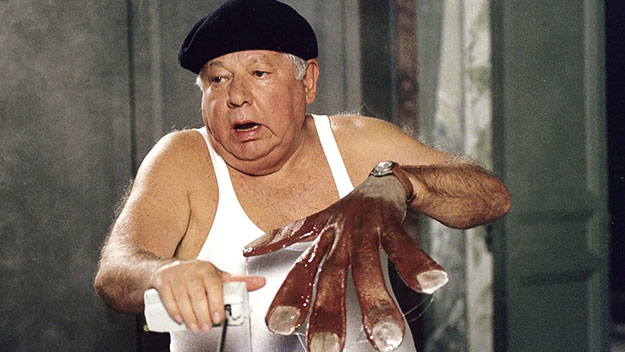
Fantozzi is a hapless, downtrodden, working class character who was played in a series of 10 films by the Italian comedic actor Paolo Villagio. All of the films are very funny but the first from 1975 is particularly hilarious. The film is told in a series of 10 vignettes with an introduction and an epilogue that basically equal the 12 months of a year in his life. Fantozzi works for a “mega-corporation” where he is basically a faceless drone that has to kowtow to and stoke the bosses’ egos.
In one especially memorable sequence, the unmarried office workers are challenged to play the married workers in a soccer game. The unmarried players have, of course, an advantage being that they are all younger, and in implication by Italian societal standards of the time more carefree, not having to worry about a house and kids. The game starts on an already muddy and waterlogged field but gets worse as it begins pouring rain. Fantozzi scores an own-goal against his own team, infuriating his own goalie. By the end in a Monty Pythonesque sequence, Fantozzi gets literally drilled into the mud up to his neck while St. Peter himself appears on the top crossbar replete with halo and the keys to heaven to signify that “the tragedy was finally at an end.”
Particularly notable in the series of films are the characters of his slovenly wife, whom he always bemoans that he married, and his daughter, Mariangela, who is so ugly people mistake her for a monkey (and in fact, was played by a man). It became such a running joke in Italy that when someone wants to insult a woman’s looks they say “sembra la figlia di Fantozzi” (“she looks like Fantozzi’s daughter”). The first film was so popular that it was number one at the box office for eight months and led to the aforementioned nine sequels.
4. Ricomincio da tre (Start Over at Three) (1981)
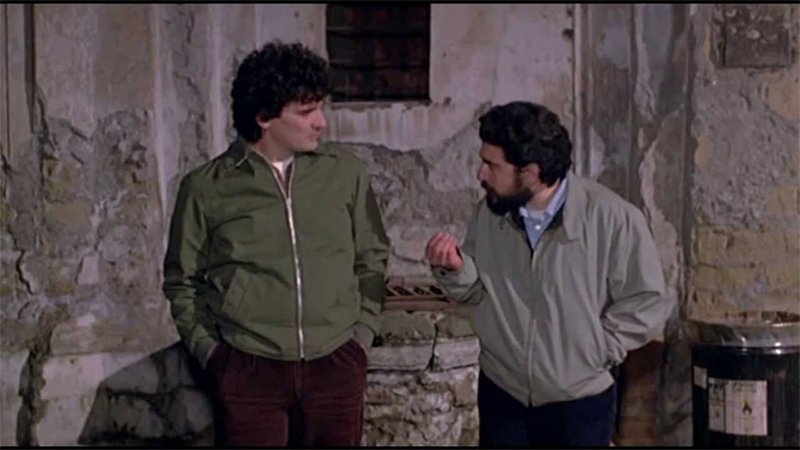
This film stars the late, great Massimo Troisi who was an icon in his native Italy. Troisi was one of the most popular Neapolitan comedians ever in the history of Italy, probably second only to Totó. Troisi was very popular on TV and that led to a series of films that were very popular in Italy. “Ricomincio da tre,” his debut film, is arguably his best. Troisi would sadly pass away one day after the filming of “Il Postino” (“The Postman,” 1994) the film that posthumously garnered him the international fame he always sought after.
“Ricomincio da tre” tells the story of Gaetano, a resident of one of the many small towns around Naples, who is bored with his existence. He has a dopey friend, Lello (Lello Arena), who seems more than content with their daily routine. His father lost his right hand and prays to the Madonna daily for a miracle to regrow his hand. Gaetano is annoyed at the ridiculousness of his father’s persistence. In one of the film’s funnier sequences, Gaetano and Lello argue over a “miracle” versus a “MIRACLE.” One is a miracle that everyone agrees is amazing but ultimately plausible, and the other is where people run out into the street screaming “it’s a MIRACLE, A MIRACLE!!!”
Gaetano decides to get away from this simple life and goes to stay with his aunt in Florence. There he meets a missionary Evangelical priest from the United States who has gotten his aunt and her friends wrapped up in his “message.” At his aunt’s urging he accompanies the young priest, Frank. Frank’s Italian is limited, so he continually repeats the story of how St. Francis of Assisi spoke to the birds as a way of making a parallel to spreading the gospel. Gaetano gets so annoyed he goes on a hilarious rant basically saying that the reason birds migrate is that St. Francis wouldn’t ever shut up around them so they took off.
Other hilarious scenes include his aunt’s friend and her 40-something year old mama’s boy that won’t leave her side, and him running into a crazy guy at a clinic. Ultimately he meets Marta, and they become lovers and he moves in. His friend Lello comes to visit (more very funny moments) but one night Marta inadvertently confesses that she is pregnant and had a recent affair with a teenage boy, and therefore is not sure whose baby it is. Gaetano is despondent and goes back home to Naples under the guise that it’s for his sister’s wedding. Ultimately he goes back to Marta, not caring if it’s his child since he loves her. This is one of many films that gives a “slice of life” of Italy.
5. Non ci resta che piangere (Nothing Left to Do But Cry) (1984)
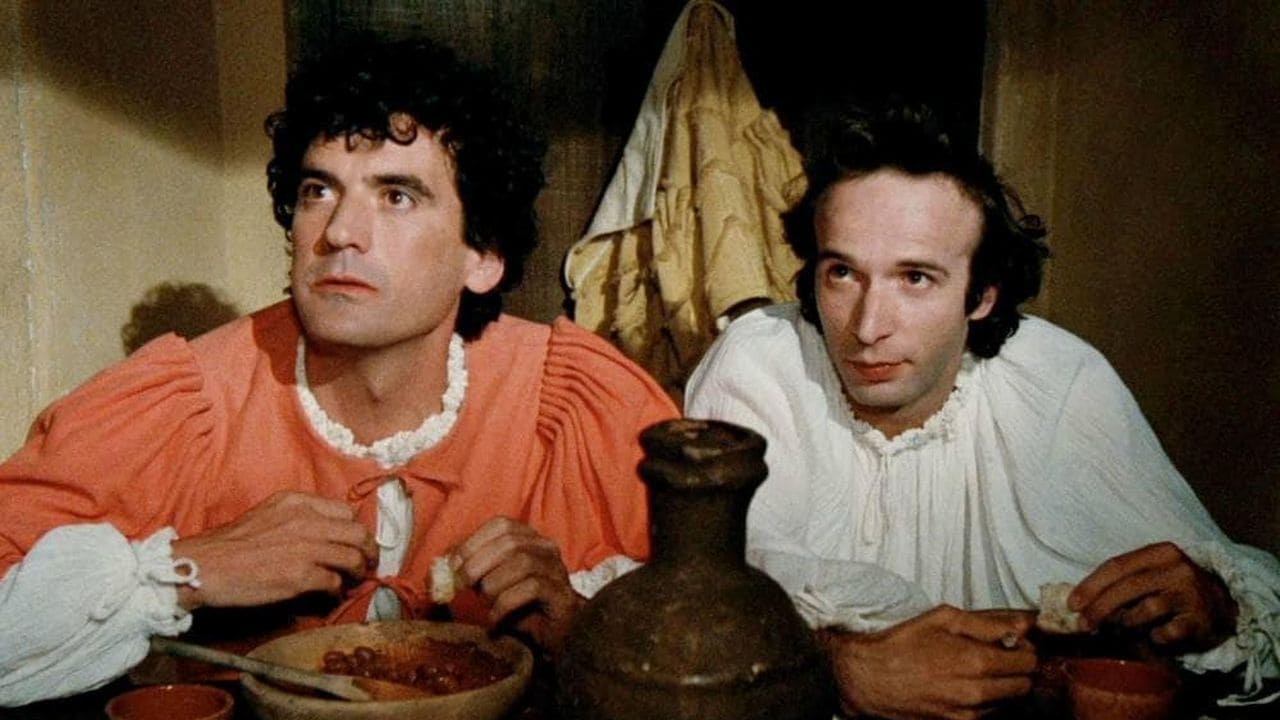
This is the one and only collaboration between Massimo Troisi and Roberto Benigni (“Life is Beautiful”). The pair co-wrote and co-directed the film. As stated above, Troisi was a cultural icon in Italy, representing Naples and the south. Benigni was (and still is) an Italian cultural icon born in Tuscany and more representative of the north. In this film they each express their ideology of the north and the south without falling into clichés or stereotypes. Benigni plays Saverio, a teacher, and Troisi plays Mario, a janitor; they are friends who work at the same school. They are on a road trip together and Saverio is complaining about his unwed sister and, to Mario’s annoyance, keeps saying that he should marry her.
They get stuck at a railroad crossing and then their car breaks down. Their luck gets worse as it starts to rain heavily, but they spot an inn up ahead and manage to get in for the night. The next morning the man who was already sleeping at the inn when they got there is urinating out of the window. Saverio and Mario’s laughter quickly turns to horror as the man is struck and killed by a spear. Much to their chagrin, they quickly find out that they are back in 1492. Saverio is delighted at this opportunity to see what life was really like back then, but Mario is appalled by the medieval lifestyle, especially the lack of indoor plumbing and that they, as men, are basically wearing women’s tights for pants.
At church Mario falls for a pretty young girl, Pia, and he basically woos her with the false pretense that he is a musician by singing what he can remember of Beatles tunes, Volare, and the Italian national anthem. Mario also has an idea that they could become rich by inventing all the modern devices that they are familiar with, but as Saverio points out, just because you are aware of something’s existence doesn’t mean you know how to make it. In another great scene they are writing a letter, which is a brilliant homage to the letter writing scene from Totó in “Totó, Peppino, e la Malafemmina” (1956).
Eventually Saverio convinces Mario that they need to stop Columbus from setting sail and discovering America because nothing good ever came of it. As they travel to try to find and stop Columbus, they run into Leonardo da Vinci. They figure he is one of the greatest inventors of all time so they can cut him in on the “inventing” of lights, thermometers, trains, etc. He doesn’t seem to understand so they continue on to stop Columbus. However, they miss him, as he seems to have left sooner than our modern history books had stated.
At this point Saverio despondently admits that the whole reason to stop Columbus was so that Columbus would never discover America and therefore his sister’s American ex-boyfriend would never be born and therefore never dump her. Just then they hear a train coming… and it is commandeered by da Vinci! They hop on board resigned to the fact they are stuck in the past, but that they can rewrite history.